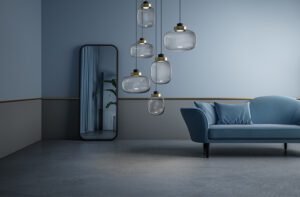Notes from the Field: The Work of John DaSilva
August 12, 2013
By Karin Lidbeck Brent
When you drive around the village of Chatham you’ll see many signs that point to the success of architecture firm Polhemus Savery DaSilva. That was how I first became aware of their work ten years ago–by gawking at homes while I drove by and wondering who was behind their beauty. Needless to say, I was eager to scout some of their projects and I met John DaSilva.
Since then I have styled numerous Polhemus Savery DaSilva houses for dozens of shelter publication.
John’s work has a wonderful sense of whimsy and playfulness that I have always admired. Recently I was working with John styling some of his new projects and I decided I waned to share some of what I love about John’s work.
I asked him to share a favorite house that he designed. But, he made it clear that was an impossible task. “All of my projects are my babies, I truly don’t have a favorite,” he explained. “There are certain ones I might be able to put forward as having turned out better for one reason or another, although in the eyes of the clients each of their own is the best because it best suits them. That is of course a key point.”
I pressed John anyway and he came back with a description of this beautiful home. “This project, Maison Sirene d’Huitre, is the one that today I would chose as the single project that best represents the ideas most prevalent in my work (tomorrow I might choose a different one!). Like the late nineteenth-century shingle style that was fashionable into the early twentieth century, was revived starting in the 1960s and ’70s, and has become something of a New England vernacular today. The overall design is based on an irregular assemblage of forms unified by a continuous shingle wrapper. The front entry is given the hierarchical placement of most importance and a strong symmetrical center façade including an over-scaled decorative window above and an elegantly proportioned “umbrella gambrel” (where the roof flares at the eaves), is created around it. There is a twist here, however, as the actual door is off center, to the side of the porch that has a curved wall and bench seat leading to it. The plan configuration necessary to solve the functional needs of the family is in conflict with the expressive needs of the architecture. Solving apparent contradictions like this is a key element of my work. When architectural oxymorons like this occur it makes the work seem simple, even obvious, but in reality it takes clever study and creative energy to achieve this.”

Photos by Brian Vandenbrink
Maison Sirene d’Huitre incorporates a small screen wall at the secondary entrance and a large flat weathervane. Here, flattening and exaggerating the scale of traditional details makes them more emphatic, more contemporary, more playful and more fun. It is important in many projects to give serious thought to producing work that appears to not take itself too seriously. This suits clients who are seeking a relaxed, carefree life in the rugged context of coastal New England.

When I visit any of John’s projects, there is always some wonderful sense of surprise. I like the way he borrows elements and inspirations from other periods.
As for the below, John explains, ”Screen walls can provide character in a contemporary gothic style, the screen wall highlights the porte cochere that is an entry.”

I also like this modern interpretation of an interior capitol column.

This house has a kind of fairy tale charm that is both whimsical and sophisticated.

John describes some of the challenges it takes to make this work. “Flat rather than three-dimensional detailing is used here, in the pilasters that define a symbolic wrap around porch,” he says. “The client wanted the character a wrap-around porch yields but didn’t have the space for it. Detailing to provide a ‘porch’ that occurs just within the thickness of the wall is enough to achieve the character without using the space. This project also relies on balanced asymmetry for order. The oversized second story window and shutters center on the peak of the roof and provide a strong enough center so the remainder of the façade need not be symmetrical. The scale of the windows and muntins within them are exaggerated, giving the house the endearing character of home that one might find in a child’s drawing of a house.”
I also asked John to send me pictures of details that show his playful side! Playfulness is a word that I often use when describing John’s work and this picture of a staircase sums up that idea perfectly.

Taking artistic inspiration from the past is also essential to John’s work. “Piranesi, the eighteenth century Italian engraver, created inspired images of fantasy spaces that overwhelmed the senses and evoked the sublime. Bringing his ideas down to earth with flat painted wood balustrades and columns was the perfect solution for the stair of a lakeside family playhouse. Dramatic and complex enough to be engaging, but playful and inviting enough to live with on a daily “basis, the stair evokes smiles as the four resident children and their child-at-heart parents play on and around it.”
Aesthetically pleasing and architecturally enduring, the work of John DaSilva at Polhemus Savery and DaSilva is best explored in the book Shingled Houses in the Summer Sun: The work of Polhemus Savery Dasilva. It is impossible to sum up in a short blog the diversity and ingenuity in John’s work, but this book describes in beautiful photos and details the complexities, the styles and personailites of the many projects John has designed.

Share
![NEH-Logo_Black[1] NEH-Logo_Black[1]](https://b2915716.smushcdn.com/2915716/wp-content/uploads/2022/08/NEH-Logo_Black1-300x162.jpg?lossy=1&strip=1&webp=1)






